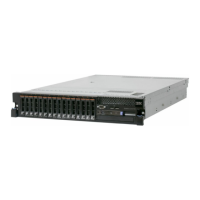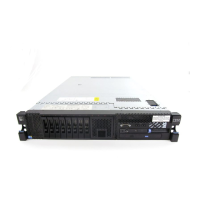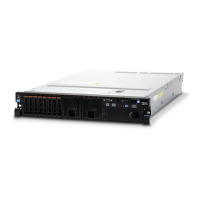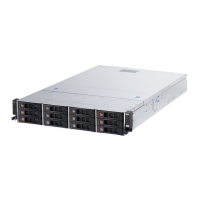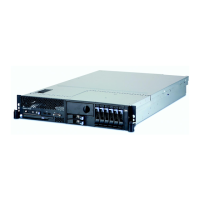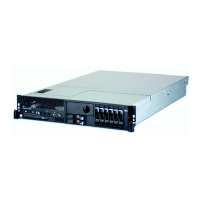5. From the Product family menu, select System x3650 M3.
6. From the Operating system menu, select your operating system, and then click
Search to display the available installation documents.
Using the integrated management module
The integrated management module (IMM) is a second generation of the functions
that were formerly provided by the baseboard management controller hardware. It
combines service processor functions, video controller, and (when an optional
virtual media key is installed) remote presence function in a single chip.
The IMM supports the following basic systems-management features:
v Environmental monitor with fan speed control for temperature, voltages, fan
failure, and power supply failure.
v Light path diagnostics LEDs to report errors that occur with fans, power supplies,
microprocessor, hard disk drives, and system errors.
v DIMM error assistance. The IBM System x Server Firmware disables a failing
DIMM that is detected during POST, and the IMM lights the associated
system-error LED and the failing DIMM error LED.
v System-event log.
v ROM-based IMM firmware flash updates.
v Auto Boot Failure Recovery.
v A virtual media key, which enables full systems-management support (remote
video, remote keyboard/mouse, and remote storage).
v When one of the two microprocessors reports an internal error, the server
disables the defective microprocessor and restarts with the one good
microprocessor.
v NMI detection and reporting.
v Automatic Server Restart (ASR) when POST is not complete or the operating
system hangs and the OS watchdog timer times out. The IMM might be
configured to watch for the OS watchdog timer and restart the server after a
timeout, if the ASR feature is enabled. Otherwise, the IMM allows the
administrator to generate an NMI by pressing an NMI button on the information
panel for an operating-system memory dump. ASR is supported by IPMI.
v Intelligent Platform Management Interface (IPMI) Specification V2.0 and
Intelligent Platform Management Bus (IPMB) support.
v Invalid system configuration (CNFG) LED support.
v Serial redirect.
v Serial over LAN (SOL).
v Active Energy Manager.
v Query power-supply input power.
v PECI 2 support.
v Power/reset control (power-on, hard and soft shutdown, hard and soft reset,
schedule power control).
v Alerts (in-band and out-of-band alerting, PET traps - IPMI style, SNMP, e-mail).
v Operating-system failure blue screen capture.
v Command-line interface.
v Configuration save and restore.
v PCI configuration data.
v Boot sequence manipulation.
Chapter 6. Configuration information and instructions 263
